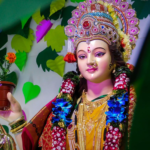Introduction
In the rich tapestry of Hindu mythology and religious practices, one encounters a poignant and profound ritual that encapsulates the essence of life, death, and the spiritual journey. Known as “Ram Nam Satya Hai,” this chant is recited during the last rites of a departed soul, representing more than just a mere utterance of words. In this blog, we will delve deep into the history, meaning, and significance of this ancient tradition, exploring the philosophical underpinnings and its relevance in the modern world.
History and Origins
The roots of the “Ram Nam Satya Hai” chant can be traced back to the sacred texts and scriptures of Hinduism, particularly the Vedas and the Upanishads. These ancient texts contain the philosophical and spiritual foundations of Hindu beliefs and rituals. The chant finds its essence in the concept of the eternal, the transient nature of life, and the quest for liberation from the cycle of birth and death, known as samsara.
In Hindu mythology, Lord Rama is considered an embodiment of virtue, righteousness, and dharma. The name “Rama” carries immense significance, as it represents the divine and serves as a symbol of a righteous life. “Nam” means name, and “Satya” means truth. Therefore, “Ram Nam Satya Hai” translates to “the name of Rama is truth” or “the truth is in the name of Rama.” This phrase acknowledges the eternal truth that is believed to lead the soul to liberation, also known as moksha.
Meaning and Significance
The chant of “Ram Nam Satya Hai” holds profound meaning and significance in the context of Hindu last rites. Let’s break down its elements to understand its essence better:
- Ram (Rama): As mentioned earlier, Lord Rama symbolizes righteousness, moral values, and dharma. Reciting His name during the last rites signifies the acknowledgment of the divine path of virtue that one should strive to follow throughout life.
- Nam (Name): Naming holds a unique place in Hindu culture. A name is not merely a label but is believed to carry the essence of one’s being. In the last rites, invoking the name of Rama signifies seeking His divine grace and guidance for the departed soul on its spiritual journey.
- Satya (Truth): The concept of truth is central to Hindu philosophy. It extends beyond the mere truthfulness of words and actions. In the context of “Ram Nam Satya Hai,” it signifies the ultimate truth – the eternal reality beyond the physical world, which the soul aspires to attain.
The significance of this chant can be understood from two angles:
a. Fulfilling One’s Dharma: In Hinduism, every individual has a dharma, a moral and ethical duty. Reciting “Ram Nam Satya Hai” is a reminder of the righteous path and the importance of fulfilling one’s dharma in life. It encourages individuals to live virtuously and ethically.
b. Spiritual Journey: The ultimate goal of human life in Hinduism is to achieve moksha, liberation from the cycle of birth and death. By chanting this mantra, it is believed that the soul of the departed is guided towards its spiritual journey, paving the way for a positive afterlife.
Last Rites and Funeral Traditions
The chant “Ram Nam Satya Hai” is most commonly heard during Hindu funeral ceremonies and cremations. The last rites, also known as Antyesti, are a crucial part of Hindu funeral traditions. These rites are performed with the belief that they help the soul navigate the transition from this world to the afterlife.
The process typically involves the following steps:
- Preparation of the Body: The deceased’s body is bathed, dressed in clean clothes, and adorned with flowers. It is then placed on a stretcher or a bier.
- Cremation or Burial: In Hinduism, cremation is the most common method of disposing of the body. The family, friends, and mourners gather at the cremation ground, where the body is placed on a pyre. Before lighting the pyre, the chant “Ram Nam Satya Hai” is recited.
- The Chant “Ram Nam Satya Hai”: The chanting is a solemn and poignant moment, symbolizing the truth and the divine guidance that will lead the soul on its journey beyond life. It is a collective act of seeking blessings and grace for the departed soul.
- Collecting Ashes: After the cremation, the ashes are collected, and they are either immersed in a holy river or kept in an urn for future rituals.
- Mourning and Gathering: Family and friends gather to offer condolences and support to the bereaved. Mourning rituals may continue for a specified period.
Spiritual Journey and Beyond
The belief in the afterlife is central to Hindu funeral traditions. Hindus believe that life does not end with death; it is merely a transition. The soul embarks on a spiritual journey, guided by the actions, thoughts, and karma accumulated during one’s lifetime.
“Ram Nam Satya Hai” plays a crucial role in this journey:
- Karma: Hinduism emphasizes the importance of karma, the accumulated actions and deeds in one’s life. Chanting the name of Rama is seen as an act that can positively influence the karma of the departed soul, potentially leading to a more favorable afterlife.
- Guidance and Protection: The name of Rama is believed to offer divine guidance and protection to the soul as it navigates the realms beyond. It serves as a spiritual compass to help the soul on its path.
- The Search for Moksha: The ultimate goal for the soul is to attain moksha, liberation from the cycle of birth and death. Chanting the name of Rama is seen as a way to align the soul with this goal, leading to spiritual growth and eventual liberation.
Incorporating Modern Relevance
While “Ram Nam Satya Hai” is deeply rooted in ancient Hindu beliefs and practices, it still holds modern relevance. In today’s fast-paced world, where the connection to spiritual and philosophical aspects of life can sometimes be lost, this chant serves as a reminder of essential values and truths:
- Moral and Ethical Compass: The chant encourages individuals to lead a life guided by morals and ethics. In a world where material pursuits often take precedence, it reminds us of the significance of righteousness and dharma.
- Meditative Practice: Chanting the name of Rama can be a meditative and calming practice, helping individuals find inner peace and focus. In modern times, it is often used as a form of spiritual meditation.
- Coping with Loss: Grief and loss are universal experiences, and the chant can offer solace to those mourning the departed. It provides a sense of connection to the divine and the assurance that the departed soul is on a positive spiritual journey.
- Interfaith Harmony: The principles of righteousness, truth, and the pursuit of liberation are universal concepts that transcend religious boundaries. “Ram Nam Satya Hai” can serve as a symbol of interfaith harmony and the commonality of spiritual aspirations.
Conclusion
“Ram Nam Satya Hai” is not just a chant; it’s a profound reminder of the eternal truths that guide human existence. In the context of Hindu last rites, it signifies the journey of the departed soul and its aspiration for moksha. The chant encapsulates the essence of dharma, karma, and the pursuit of righteousness, making it a timeless and relevant tradition. In a world filled with distractions, it serves as a spiritual compass, guiding individuals toward a life of truth and virtue. The significance of this chant extends beyond religion and culture, emphasizing the universal quest for a meaningful and spiritually fulfilling life.


